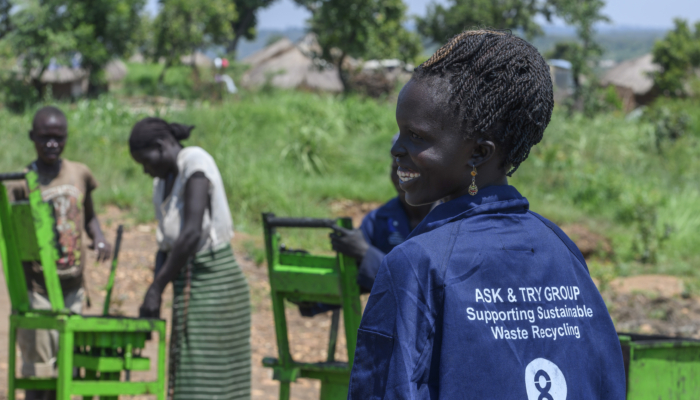Inclusivity in internal and external communications

From ideas to action
Throughout KUNO’s Diversity and Inclusion Road Trip, it has become clear that diversity and inclusivity are at the top of the agenda of many humanitarian organizations. It is a topic that sparks internal discussions, but it should also become visible in the external communication. This is easier said than done. In the fifth session of our diversity and inclusion journey, we looked for practical tools so that insights can develop into concrete action.
Allyens inclusivity scan
Oxfam Novib decided to hire Allyens, an inclusive marketing agency, to perform an inclusion scan of various communication materials. Allyens aims to empower brands to be more representative and inclusive, in order to achieve better representation in communication and marketing strategies. Lien Vandael, inclusive strategist at Allyens, explains the importance of their work: “If you look at the society that surrounds you, and then at the representation in marketing campaigns, it usually does not match”.
The inclusion scan for Oxfam Novib gave many insightful recommendations, for example: the frequent use of passive writing when discussing people in need takes away their agency and does not address the question of who is responsible for the suffering. Moreover, the photographs used on the website of Oxfam sometimes portrayed elements of “white saviorism”, which reinforces the image of the white aid worker as a hero for the helpless. The concrete recommendations from Allyens were to use active speech more often, and to let people themselves tell the story of their struggles, instead of telling it for them. They also advised to share hopeful stories, and to not only include photos of sad people on their website.
you should always start from a place of truth, and acknowledge the suffering of those you portray. However, it is important to give them the agency to explain their own story.
When asked if this will not lead to a positivity trap where all the hurt and suffering is covered in a “sauce” of happiness and positivity, Lien answers: “you should always start from a place of truth, and acknowledge the suffering of those you portray. However, it is important to give them the agency to explain their own story, and show the local initiatives that try to tackle these issues. It is a fine balance that you need to find.”
How Oxfam followed up
Ailing Eelman, freelance communication specialist at Oxfam Novib, reflects on the process of the inclusion scan with Allyens. Oxfam Novib was inspired by one of their partners to do an inclusion check, to “practice what they preach’’ in their fight for equality. Several things, like the Black Lives Matter movement, led up to this moment. It was the right time to get colleagues on board. They recognized that in order for the scan to have a real impact, they must be committed to actually follow up on the results. This has led to different actions and initiatives, such as the Story Gather project, where people from communities where Oxfam is present are asked to share their stories and are being photographed by a locally hired photographer.
Humanitarian organizations need to practice what they preach.
Important for Ailing is the realization that inclusive communication will not be achieved overnight. It is a long and sometimes difficult process that inevitably brings up tensions within an organization. Having an outside perspective to refer back to on the way is helpful, which makes the scan done by Allyens even more valuable.
Changing the mindset
This realization is confirmed by employees of other humanitarian organizations, who emphasize that true diversity and inclusivity in an organization requires a change of mind-set. Making quick changes without understanding why it is important does not do the trick. As one participant of the Road Trip noted: you can make a list of which words to avoid, but if you do not explain why they should be avoided you are not encouraging meaningful change. The values of your organization should be the starting point for change, not the fear of losing audience or being accused of exclusive behavior.
Conclusion
Achieving true inclusivity and diversity in an organization is a journey of small steps but big rewards. It must be an organization-wide effort, and working towards inclusive communication is an important part of that. As humanitarian organizations, we aim to empower the people we help, and this should be reflected in our communication.
Do you want to read more about inclusiveness and diversity? Click here.
